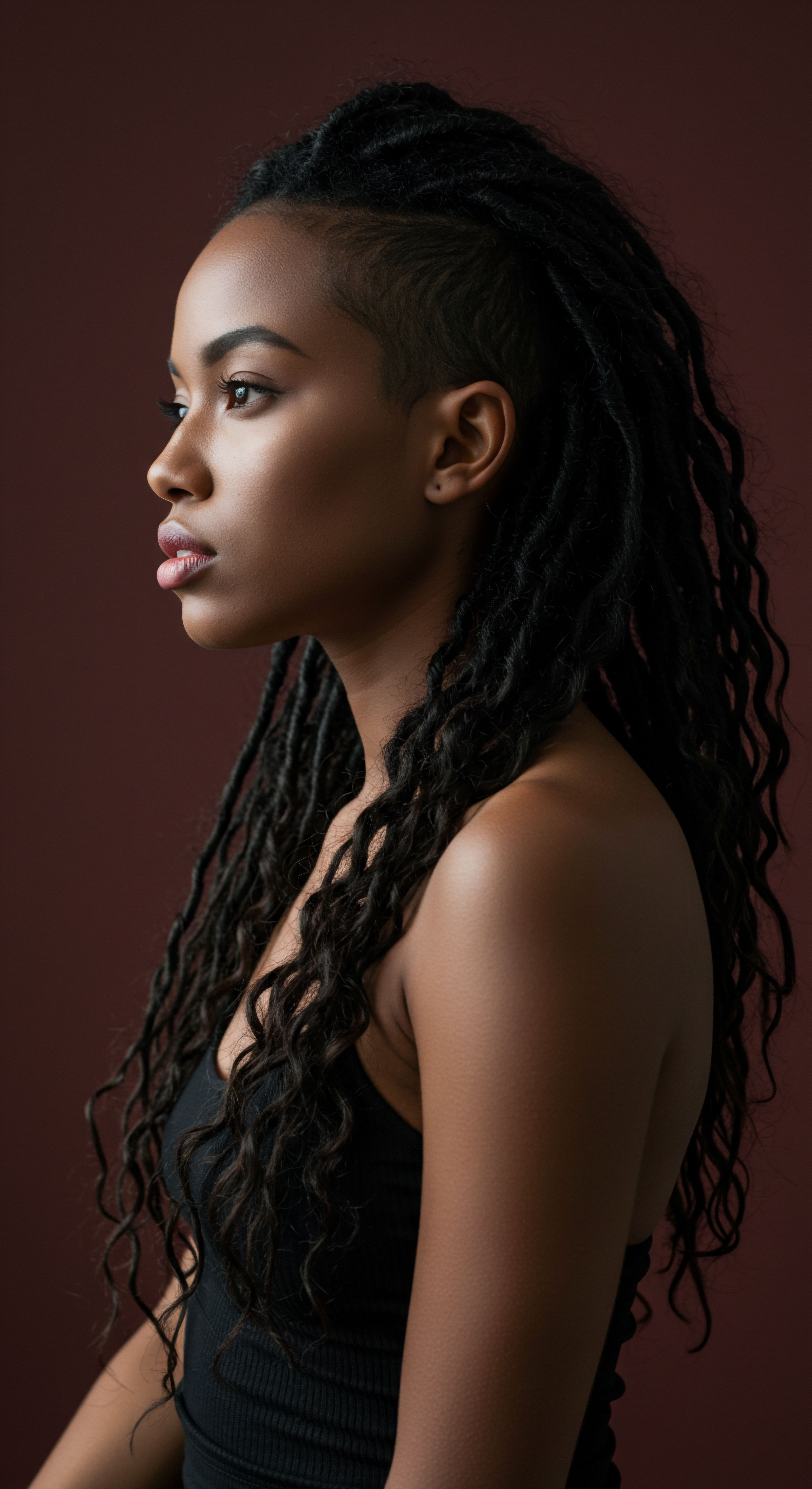
Roots
As twilight descends and the world quiets, a subtle yet profound transformation begins within us. Our bodies, in their wisdom, embark upon a nightly journey of restoration, a silent, intricate dance of cellular renewal. For those who cherish their textured crowns, this nocturnal rhythm holds a special significance, a deep connection to the very vitality of each strand. To truly understand how sleep influences the spirited growth of textured hair, we must first descend to the fundamental levels of its being, exploring the hidden architecture and inherent cycles that govern its existence.

The Hair Follicle’s Internal Clock
Each individual hair follicle, a marvel of biological design, possesses an internal clock, a delicate mechanism attuned to the grand symphony of our body’s circadian rhythm. This rhythm, our intrinsic 24-hour cycle, orchestrates countless physiological processes, including the quiet, consistent work of hair production. When we rest, a period of heightened cellular activity begins, a time when the follicle’s deep structures receive their vital directives for growth and repair.
This inherent timing mechanism ensures that the conditions for hair regeneration are optimal during our hours of slumber, a testament to the body’s ingenious design. The synchronization of these cellular processes with the broader biological clock plays a crucial role in maintaining the hair’s consistent growth patterns, ensuring that the anagen phase, the active period of growth, can proceed with unwavering purpose.
This intricate interplay is not merely theoretical; studies have illuminated how the body’s natural daily rhythms influence the very machinery of the hair follicle. For instance, specific clock genes within the hair follicle itself modulate its activity, influencing when cells divide and when they rest. Disruptions to this delicate internal timepiece, perhaps from inconsistent sleep patterns, can send ripples through the system, potentially altering the harmonious progression of hair growth.

The Anagen Phase’s Quiet Purpose
Hair growth unfolds in a cyclical progression, a graceful ballet of phases. The anagen phase stands as the period of active growth, where cells within the hair follicle divide with remarkable speed, pushing forth a new strand. This vibrant period, which can span several years for each hair, represents the very heart of hair production. It is during the restorative hours of deep sleep that the body provides the most conducive environment for this anagen phase to flourish.
The resources required for rapid cell proliferation, the very building blocks of our hair, are most readily available and actively channeled during this time of profound repose. A consistent, quality sleep schedule supports the longevity and vigor of this active growth period, allowing each hair to achieve its fullest potential.
Deep sleep provides the ideal environment for the hair’s active growth phase to thrive, nurturing each strand from its root.
The duration of the anagen phase directly dictates the ultimate length a hair strand can attain. For textured hair, which often experiences a slower growth rate and a shorter anagen phase compared to other hair types, maximizing this period becomes particularly significant. A well-rested body, therefore, contributes to extending this active growth window, offering a profound benefit to those seeking greater length and density in their curls and coils.

Cellular Rejuvenation Beneath the Veil of Night
Beyond the rhythmic cycles, sleep is a time of profound cellular rejuvenation. The body, in its wisdom, initiates extensive repair processes across all tissues, including the scalp and its numerous hair follicles. This nightly mending is a cornerstone of hair health, allowing damaged cells to recover and new cells to be created. Without this dedicated period of restoration, the delicate machinery of hair production can falter, leading to compromised strands and diminished vitality.
Think of it as a nightly renovation project. While we drift into dreams, our body’s skilled artisans are diligently working, patching up wear and tear, strengthening structures, and preparing for the demands of the coming day. For hair, this means fortifying the very foundations of the follicle, ensuring that the environment for future growth remains robust and resilient.
This comprehensive cellular repair extends to the scalp itself, a living landscape that provides the essential groundwork for healthy hair to sprout and flourish. A compromised scalp, burdened by inflammation or cellular fatigue, can impede growth and diminish the vibrancy of textured strands.

Hair Growth Cycle Stages
| Phase Anagen |
| Description Active growth phase, new hair shaft forms. |
| Duration 2-7 years |
| Phase Catagen |
| Description Transitional phase, follicle shrinks. |
| Duration 2-3 weeks |
| Phase Telogen |
| Description Resting phase, hair is dormant before shedding. |
| Duration 2-4 months |
| Phase Exogen |
| Description Shedding phase, old hair falls out. |
| Duration Variable, often part of telogen |
| Phase Understanding these phases illuminates the dynamic nature of hair growth. |

Ritual
Stepping beyond the foundational understanding of sleep’s influence, we arrive at the practical wisdom that shapes our daily hair experience. The transition from scientific insight to actionable care invites us to consider the conscious choices and gentle habits that can transform our nighttime hours into a sanctuary for textured strands. This exploration delves into the subtle yet potent practices that align with our body’s restorative processes, offering a guiding hand towards truly vibrant hair.
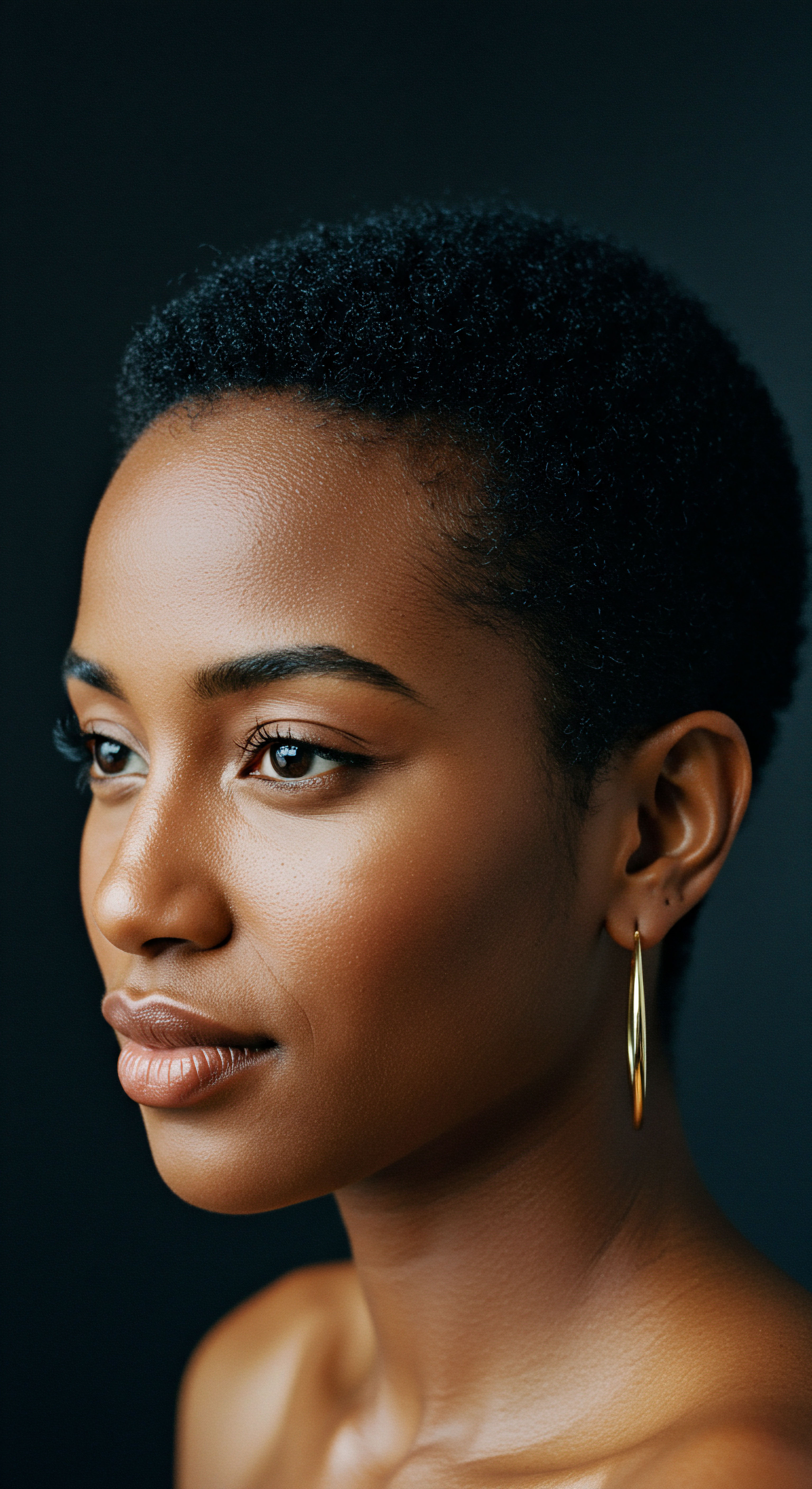
The Hormonal Orchestra of Rest
During the hours of profound rest, our bodies conduct a complex symphony of hormonal regulation, a performance vital for hair health. Melatonin, often celebrated for its role in sleep regulation, also quietly participates in stimulating hair follicles, extending the active growth phase. Growth hormone, released in its highest concentrations during deep sleep, acts as a potent signal for cellular regeneration, including the tireless work within our hair follicles.
When sleep patterns are disrupted, this delicate hormonal balance can sway, leading to a cascade of effects that compromise hair vitality. Cortisol, the stress hormone, can surge with insufficient rest, pushing hair follicles prematurely into their resting phase, thereby increasing shedding.
Consider the body as a finely tuned instrument. Each hormone plays a specific note, and together they create a harmonious melody that supports overall well-being, including the health of our hair. When the rhythm of sleep is broken, certain notes become discordant, or even silent, diminishing the symphony’s impact on our hair’s growth and resilience. Balancing these internal signals through consistent, quality sleep becomes a powerful act of self-care for our textured crowns.

Nourishing Strands Through Blood Flow
The quiet hours of sleep are also a time of enhanced circulation, a gentle tide that carries vital nutrients and oxygen to every corner of our being, including the scalp. This improved blood flow is a fundamental nourishment for hair follicles, providing the essential building blocks they require for robust growth. A well-rested body ensures this delivery system functions optimally, supporting the consistent supply of what our hair needs to flourish. Conversely, restricted blood flow, a consequence of inadequate sleep, can leave follicles undernourished, potentially leading to weaker, slower-growing strands.
Think of the scalp as fertile ground. Just as a garden requires consistent watering and nutrient-rich soil to thrive, our hair follicles depend on a steady stream of nourishment from the bloodstream. Sleep acts as the gentle rain, ensuring this vital delivery. This foundational support underscores why prioritizing rest transcends mere aesthetics, reaching into the very biological mechanisms that sustain our hair’s health.

Shielding Our Crowns ❉ Protective Measures for Textured Hair at Night
Beyond the internal biological processes, the physical protection of textured hair during sleep holds immense practical value. Textured strands, with their unique curl patterns and inherent delicacy, are particularly susceptible to friction and moisture loss when exposed to rough surfaces like cotton pillowcases. Throughout history, cultures across the globe have intuitively understood the significance of nighttime hair protection, employing various methods to preserve their elaborate styles and maintain hair health. From the intricate silk wraps of ancient Japan to the traditional head coverings used in many African communities, the wisdom of shielding hair during rest has been passed down through generations.
Protecting textured hair during sleep safeguards its delicate structure and preserves vital moisture.
Today, this ancestral wisdom translates into modern practices that are both effective and accessible. Sleeping on a smooth surface, such as a silk or satin pillowcase, significantly reduces friction, minimizing breakage and tangles. These materials allow hair to glide rather than snag, preserving the integrity of the curl pattern. Similarly, wearing a silk or satin bonnet or scarf provides an additional layer of protection, enveloping the hair in a gentle cocoon that shields it from environmental stressors and further friction.

What Simple Steps Can Enhance Nighttime Hair Protection?
A mindful nighttime routine can transform the experience of caring for textured hair. Consider these gentle practices to support your strands as you rest ❉
- Loose Styles ❉ Gather hair into loose twists, braids, or a “pineapple” (a high, loose ponytail at the crown). This minimizes tangling and preserves curl definition.
- Silk or Satin Surfaces ❉ Opt for pillowcases or bonnets made from silk or satin. These materials reduce friction, preventing breakage and retaining hair’s natural moisture.
- Moisture Sealant ❉ A light application of a leave-in conditioner or a hair oil before bed can help seal in moisture, particularly beneficial for drier textured hair.

Comparing Nighttime Hair Protection Methods
| Method Silk Pillowcase |
| Primary Benefit Reduces friction, prevents tangles, retains moisture. |
| Consideration for Textured Hair Excellent for all textures, foundational protection. |
| Method Satin Bonnet/Scarf |
| Primary Benefit Full hair enclosure, maintains style, reduces frizz. |
| Consideration for Textured Hair Highly recommended for preserving intricate styles and coils. |
| Method Loose Braids/Twists |
| Primary Benefit Minimizes tangles, elongates curls, prevents stretching. |
| Consideration for Textured Hair Supports curl pattern, ideal for defining and stretching. |
| Method Combining methods often provides the most comprehensive care. |
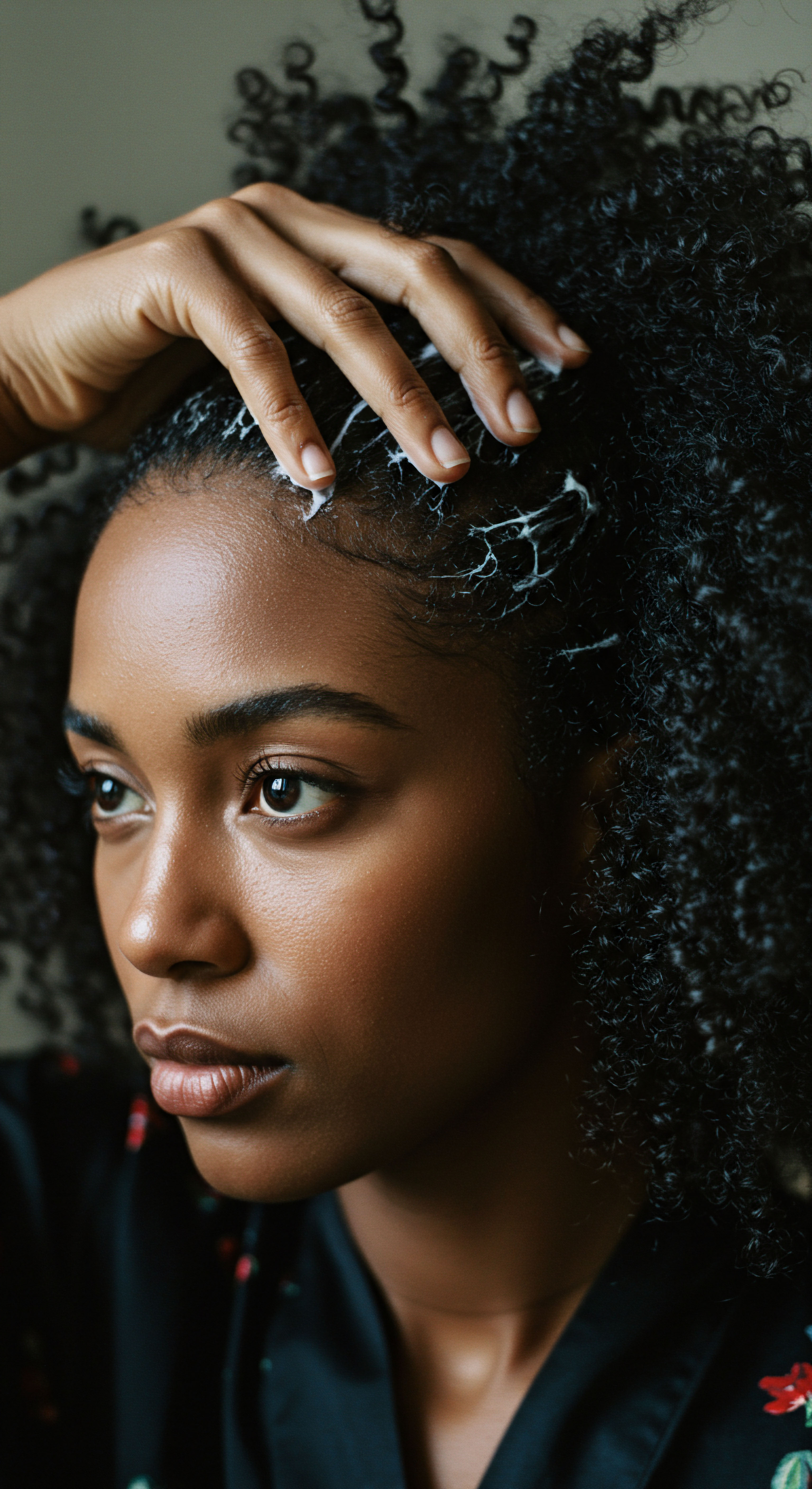
Relay
As we move deeper into the subtle workings of our bodies, the influence of sleep on textured hair growth reveals layers of complexity, inviting a more discerning gaze. This section ventures beyond the commonly acknowledged benefits, exploring the intricate interplay of biological signals, cellular responses, and environmental stressors that collectively shape the destiny of our strands. We peel back the curtain on less apparent connections, drawing from research and data to illuminate the profound and sometimes surprising ways our nocturnal state impacts hair.

Beyond the Surface ❉ The Circadian Influence on Follicle Stem Cells
The regenerative capacity of hair follicles hinges upon the delicate dance of hair follicle stem cells. These remarkable cells, residing within the follicle, are the engines of regrowth, responsible for initiating new hair shafts with each cycle. What becomes increasingly clear through scientific inquiry is that these stem cells are not merely static entities awaiting activation; they are profoundly sensitive to their micro-environment, including the rhythmic cues of the circadian clock. Disturbances to this internal biological rhythm can directly impact the activity of these vital stem cells.
A seminal paper published in Cell Reports in 2019 illuminated this connection, revealing that disruptions to the circadian rhythm, as commonly experienced by shift workers, were linked to decreased stem cell activity within hair follicles. This finding suggests that chronic disruption can diminish the regenerative capacity of these cells over time, potentially resulting in thinner, weaker hair. This observation underscores a deeper biological truth ❉ our hair’s ability to regenerate is intimately tied to the precise timing mechanisms that govern our sleep-wake cycles.
The body’s ability to synchronize cellular processes, including the division and differentiation of hair stem cells, is a finely tuned orchestration. When this orchestration falls out of sync, the consequences can ripple through the hair growth cycle, affecting its efficiency and robustness.

The Melatonin Connection ❉ A Deeper Look
Melatonin, the neurohormone renowned for regulating our sleep-wake cycles, holds a fascinating, more direct relationship with hair growth than previously understood. Beyond its systemic role in inducing rest, melatonin is synthesized within hair follicles themselves, acting as a local signaling molecule. It possesses potent antioxidant properties, shielding follicles from oxidative stress and environmental damage. Moreover, research indicates that melatonin may directly stimulate hair growth by prolonging the anagen (active growth) phase and promoting cell proliferation within the follicle.
A significant body of research supports the direct application of melatonin for hair health. For example, a large multicenter study investigating the efficacy of a 0.0033% topical melatonin solution found remarkable improvements. Participants experienced a measurable decrease in hair loss, along with noticeable improvements in hair texture, and a reduction in seborrheic dermatitis.
This evidence suggests that melatonin’s influence extends beyond merely supporting restful sleep; it actively participates in the cellular machinery of hair growth and scalp health, offering a compelling avenue for further exploration in textured hair care. This particular data point provides a tangible link between a well-known sleep-related compound and its direct, beneficial impact on hair.

Stress as a Silent Disruptor ❉ A Cortisol Cascade
The modern rhythm of life often includes a persistent companion ❉ stress. While its effects on our overall well-being are widely acknowledged, its specific impact on textured hair, mediated significantly by sleep patterns, merits a closer examination. Chronic lack of sleep is a potent stressor, elevating levels of cortisol, the body’s primary stress hormone. Sustained high cortisol levels trigger a cascade of physiological changes that are detrimental to hair follicles.
This heightened cortisol can prematurely push hair follicles from the active anagen phase into the resting (telogen) phase, leading to a condition known as telogen effluvium, characterized by widespread shedding. For textured hair, which may already be prone to breakage due to its unique structural properties, this additional stress-induced shedding can be particularly distressing. Moreover, elevated cortisol levels can promote an inflammatory response throughout the body, including the scalp, potentially damaging hair follicles and impeding their ability to grow healthy strands. In some cases, chronic stress can even trigger autoimmune responses, such as alopecia areata, where the body’s immune system mistakenly attacks its own hair follicles.
Chronic sleep deprivation fuels stress, leading to elevated cortisol levels that disrupt hair growth cycles.
The connection is multifaceted ❉ inadequate sleep intensifies stress, and stress, in turn, disrupts the delicate balance required for consistent hair growth. Breaking this cycle involves not only addressing sleep quality but also implementing stress management techniques that support overall well-being, thereby creating a more harmonious environment for hair to thrive.
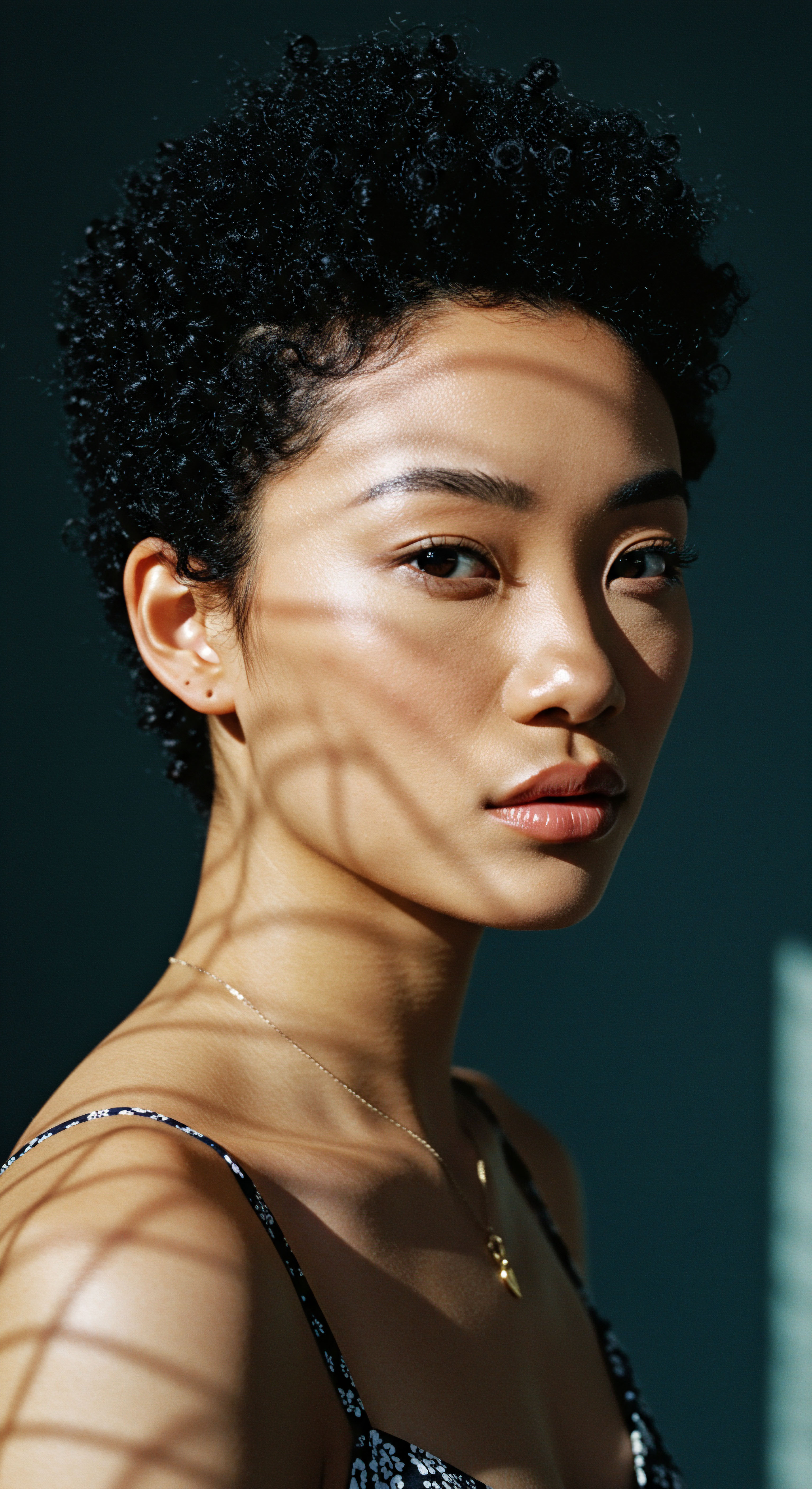
How Do We Discern Sleep-Related Hair Concerns?
Recognizing the subtle signals your hair sends can be a valuable step in understanding its needs. When sleep quality is compromised, your textured strands may exhibit certain characteristics ❉
- Increased Shedding ❉ You might notice more hair than usual in your brush, on your pillow, or in the shower drain.
- Diminished Luster ❉ Hair may appear duller, lacking its characteristic shine and vibrancy.
- Slower Growth ❉ A noticeable decrease in the rate at which your hair seems to gain length.
- Compromised Texture ❉ Hair might feel weaker, more prone to tangling, or less resilient than usual.
- Scalp Sensitivity ❉ The scalp may experience increased dryness or irritation, sometimes accompanied by itching.
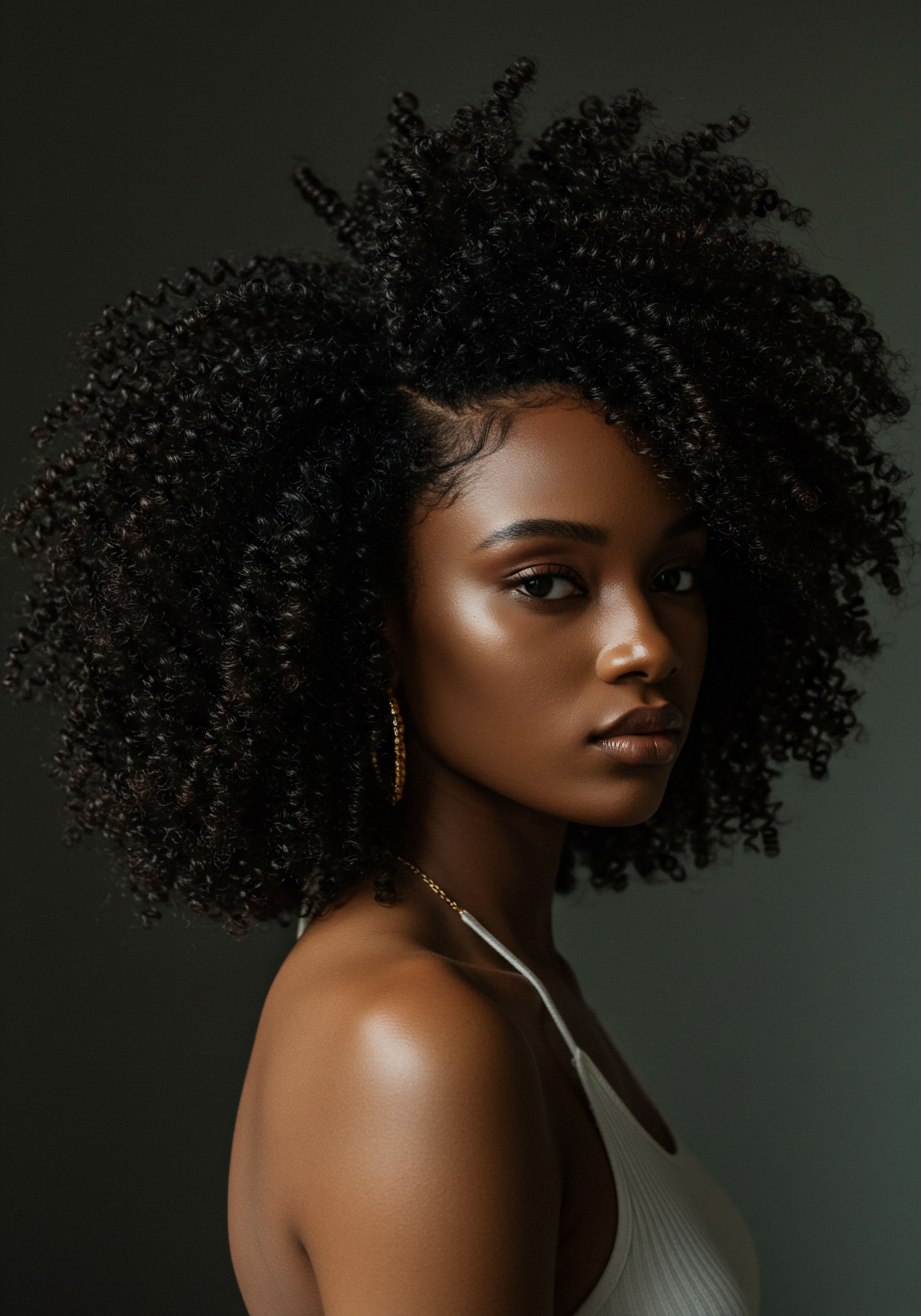
Hormonal Influences on Hair Health During Sleep
| Hormone Melatonin |
| Primary Function Related to Hair Regulates sleep, stimulates hair follicles, antioxidant. |
| Impact of Poor Sleep Reduced production, less stimulation of anagen phase. |
| Hormone Growth Hormone |
| Primary Function Related to Hair Promotes cellular repair and regeneration. |
| Impact of Poor Sleep Decreased release, hindering follicle repair. |
| Hormone Cortisol |
| Primary Function Related to Hair Stress response, can disrupt hair cycle. |
| Impact of Poor Sleep Elevated levels, pushing follicles into resting phase. |
| Hormone Maintaining hormonal balance through sleep is central to hair vitality. |

Reflection
The intricate connection between the quiet hours of sleep and the vibrant life of textured hair invites us to consider our well-being with a holistic perspective. Beyond the products and techniques, there resides a profound understanding that our internal state, particularly the quality of our rest, shapes the very essence of our external presentation. Each curl, each coil, carries the silent story of our body’s nightly endeavors.
By honoring the deep restorative power of sleep, we do more than simply care for our hair; we acknowledge its intrinsic link to our overall health, our cultural heritage, and our personal journey of self-acceptance. This gentle yet powerful wisdom encourages us to approach our textured strands not merely as a surface to adorn, but as a living testament to the harmony we cultivate within.

References
- Fischer, T. W. Burmeister, G. Schmidt, N. & Elsner, P. (2012). Melatonin increases anagen hair rate in women with androgenetic alopecia or diffuse alopecia ❉ Results of a pilot randomized controlled trial. Skin Pharmacology and Physiology, 25(4), 217-225.
- Gaddameedhi, H. & Geyfman, M. (2013). Local circadian clock gates cell cycle progression of transient amplifying cells during regenerative hair cycling. Proceedings of the National Academy of Sciences, 110(23), E2123-E2132.
- Hsu, Y. C. Li, L. & Gopinath, A. (2020). Stress and the Hair Follicle ❉ A Neuroendocrine-Immune Dialogue. Cell Reports, 31(2), 107519.
- Lin, K. K. & Hsu, Y. C. (2019). Circadian rhythm disruptions linked to decreased stem cell activity in hair follicles. Cell Reports, 27(12), 3583-3592.
- Paus, R. & Cotsarelis, G. (2009). The Biology of Hair Follicles. New England Journal of Medicine, 360(11), 1099-1107.
- Rebello, C. J. & Ravussin, E. (2016). The role of sleep in metabolic health. Obesity Reviews, 17(S1), 1-13.
- Sakor, N. & Bhowmik, D. (2020). Integrative and Mechanistic Approach to the Hair Growth Cycle and Hair Loss. Cosmetics, 7(3), 56.
- Sharma, A. & Goyal, A. (2021). Hair Biology ❉ A Comprehensive Review. International Journal of Trichology, 13(1), 1-10.
- Shor, A. & Gilhar, A. (2018). Melatonin in hair biology. International Journal of Trichology, 10(4), 161-165.
- Vaughn, A. R. & Sivamani, R. K. (2016). A systematic review of topical melatonin for hair loss. Journal of Dermatological Treatment, 27(4), 307-310.